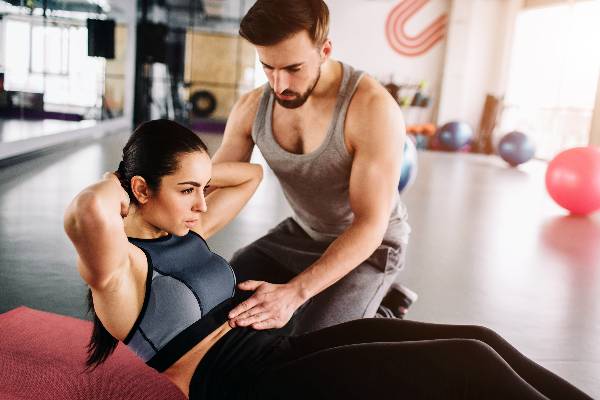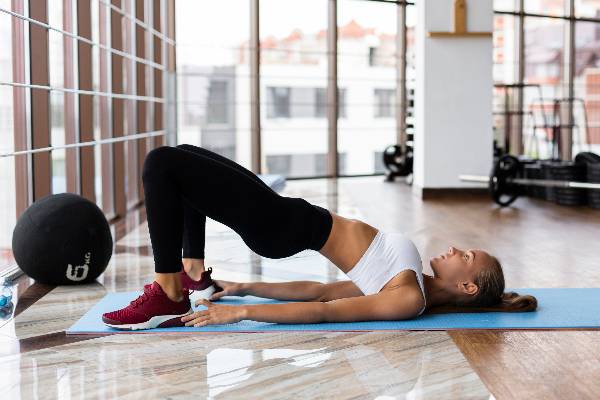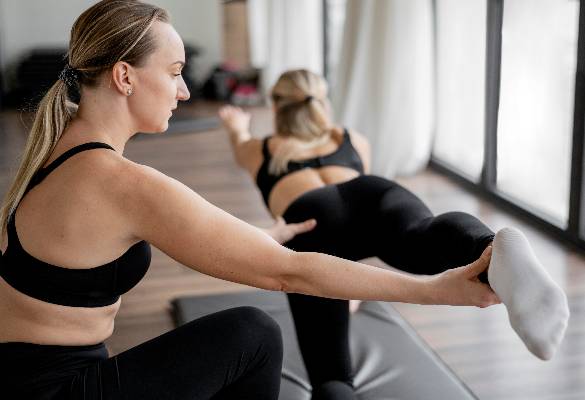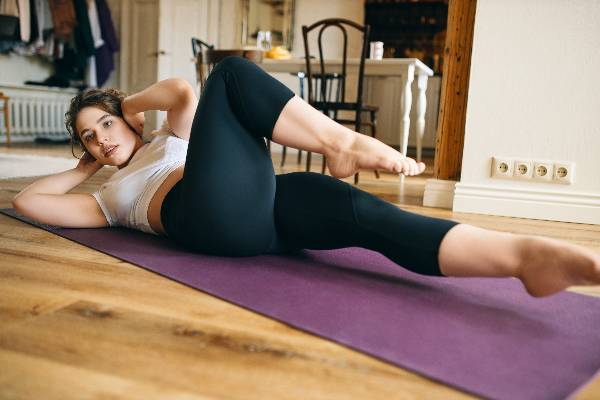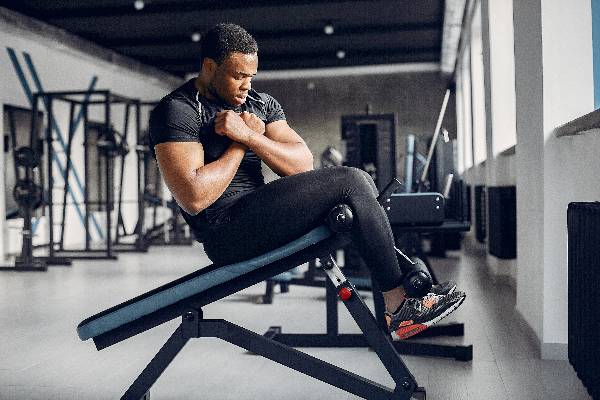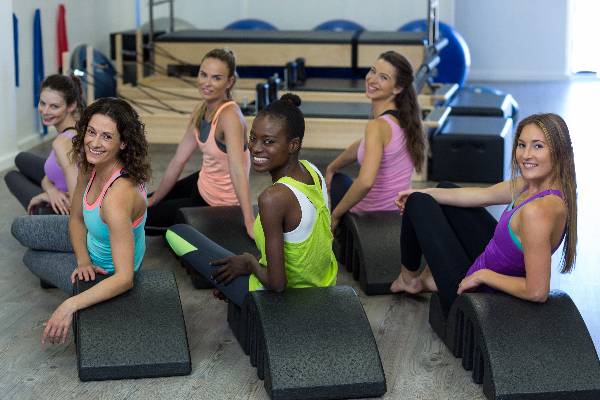Beginner Ab Routine That Can Be Done At Home or The Gym
Introduction to the importance of core strength and a toned abdomen
Core strength is often the unsung hero of fitness. It’s not just about aesthetics; a strong core supports nearly every movement you make, from daily activities to athletic performance. Whether you’re looking to trim your waistline, improve your posture, or enhance your overall stability, focusing on your abdominal muscles can lay the groundwork for all these benefits.
But fear not if you’re new to this journey! You don’t need fancy equipment or an expensive gym membership to build a solid foundation. A beginner ab routine that can be done at home or the gym fits easily into anyone’s lifestyle. It’s accessible and effective—perfect for those starting out or even seasoned athletes looking for a quick refresher. So roll out that mat and get ready to strengthen those abs with exercises designed just for you!
Basic anatomy of the abdominal muscles
The abdominal muscles consist of several key components that work together to provide stability and movement. At the forefront are the rectus abdominis, commonly known as the “six-pack.” This muscle runs vertically along the front of your abdomen.
On either side, you’ll find the obliques—internal and external. These muscles are crucial for rotational movements and lateral flexion. They help with tasks like twisting your torso or bending sideways.
Beneath these layers lies the transverse abdominis. It acts like a natural corset, stabilizing your core during various activities. Engaging this muscle is essential for maintaining good posture.
Understanding this anatomy can enhance your workout efficiency. Targeting all areas ensures balanced strength development and better performance in daily activities or sports. Strengthening these muscles contributes not only to aesthetics but also functional fitness in every move you make.
Benefits of doing ab exercises at home or the gym
Ab exercises offer immense flexibility. Whether you’re at home or in the gym, they can easily fit into your routine. This versatility allows you to stay consistent, which is key for seeing results.
Strengthening your core enhances overall stability and balance. A strong midsection supports better posture and reduces the risk of back pain. These benefits are crucial for daily activities and athletic performance alike.
Moreover, ab workouts can be tailored to any fitness level. Beginners can start with basic movements while more advanced individuals can incorporate variations that increase intensity.
Another benefit is convenience; no fancy equipment is necessary for many effective moves. Just a little space on the floor will suffice, making it easy to squeeze in a workout anytime inspiration strikes.
Regular engagement in ab routines contributes to aesthetic goals as well. A toned abdomen not only boosts confidence but also serves as motivation for broader fitness ambitions.
Beginner Ab Routine: Exercises and Step by Step Guide
Crunches are a fantastic starting point. Lie on your back with knees bent and feet flat on the floor. Place your hands behind your head, gently lifting your shoulders off the ground while engaging your core. Aim for 3 sets of 10-15 repetitions.
Next up is the plank. Get into a push-up position but rest on your forearms instead of palms. Keep your body straight from head to heels, holding this position for 20-30 seconds to start. Gradually increase as you build strength.
Russian twists target the obliques effectively. Sit with knees bent and lean slightly back, twisting side to side while keeping feet elevated if possible. Start with 3 sets of 10 twists per side.
Bicycle crunches add movement and engage multiple muscle groups simultaneously. Lie down, lift legs in a tabletop position, and alternate bringing opposite elbow to knee in a cycling motion.
Try side planks by lying on one side propped up on an elbow while raising hips off the floor. Hold for 15-20 seconds per side; it builds stability well!
– Crunches
Crunches are a classic exercise that targets the abdominal muscles effectively. They’re simple to perform and can be done almost anywhere, making them perfect for both home and gym workouts.
To execute a proper crunch, lie flat on your back with your knees bent and feet planted on the floor. Place your hands behind your head or crossed over your chest. Engage your core as you lift your shoulders off the ground, keeping your lower back pressed into the mat.
Focus on using your abs rather than pulling with your arms or neck. This ensures maximum engagement of those crucial muscles while minimizing risk of injury.
Start with sets of 10-15 repetitions, gradually increasing as you build strength. Incorporating variations like bicycle crunches later can add more intensity to keep things interesting in your routine.
– Planks
Planks are a powerhouse exercise for building core strength. They engage multiple muscle groups, making them an efficient addition to any beginner ab routine that can be done at home or the gym.
To perform a plank, start by lying face down on the floor. Prop yourself up on your forearms and toes. Keep your body straight from head to heels. It’s essential to maintain proper alignment; avoid letting your hips sag or rise too high.
Hold this position for as long as you can, aiming for 20-30 seconds initially. With practice, you can extend your time significantly.
Planks not only strengthen the abdominal muscles but also improve stability in other exercises. This makes them a versatile choice that benefits overall fitness levels while challenging both beginners and advanced trainees alike. Incorporating planks into your routine sets a solid foundation for future progress in core workouts.
– Russian Twists
Russian Twists are an excellent exercise for targeting your obliques, the muscles located on the sides of your abdomen. This movement engages multiple muscle groups while also improving your overall balance.
To perform a Russian Twist, sit on the floor with your knees bent and feet flat. Lean back slightly to create a V shape with your torso and thighs. Keep your core tight throughout the exercise to maintain stability.
From this position, clasp your hands together in front of you or hold a weight for added resistance. Rotate your torso to one side, tapping the ground beside you before returning to center and twisting to the opposite side.
Aim for controlled movements rather than rushing through reps. Start with 10 twists per side and gradually increase as you build strength.
This dynamic motion not only sculpts those abs but also enhances rotational power crucial for sports and everyday activities.
– Bicycle Crunches
Bicycle crunches are a fantastic exercise for targeting the entire core, particularly the obliques. This dynamic move mimics pedaling a bicycle, engaging multiple muscle groups while providing an effective workout.
To perform this exercise, start by lying flat on your back with your hands behind your head. Lift your legs off the ground and bend them at a 90-degree angle. As you bring one elbow towards the opposite knee, extend the other leg out straight.
Switch sides in a fluid motion as if you’re cycling through air. Focus on using controlled movements rather than speed to maximize effectiveness and minimize injury risk.
Aim for three sets of 12-15 repetitions per side to really feel the burn. Incorporating bicycle crunches into your routine not only sculpts abs but also improves overall stability and strength, enhancing performance in other exercises too.
– Side Planks
Side planks are a fantastic addition to any beginner ab routine. They target the obliques, which are crucial for a well-rounded core.
To perform a side plank, lie on your side with your legs stacked. Prop yourself up on one elbow directly under your shoulder. Keep your body in a straight line from head to heels.
Engage your core and lift your hips off the ground. Hold this position while focusing on maintaining balance. Start with 20-30 seconds on each side, gradually increasing the duration as you build strength.
For added challenge, try raising an arm or leg during the hold. This variation not only intensifies the workout but also enhances stability and coordination.
Remember to breathe steadily throughout the exercise; avoid holding your breath as it can lead to tension in other areas of your body.
Tips for proper form and avoiding injury
Maintaining proper form is crucial when performing ab exercises. It not only enhances effectiveness but also minimizes the risk of injury.
Always engage your core throughout each movement. This helps stabilize your spine and prevents unnecessary strain on your back.
Pay attention to your neck during crunches or twists. Avoid pulling on it; instead, keep it relaxed and aligned with your spine.
Breathe steadily while exercising. Inhale as you prepare for the movement and exhale as you exert effort. This will help maintain control and prevent fatigue.
Start slow, especially if you’re new to these exercises. Focus on quality over quantity by mastering a few repetitions before increasing intensity.
Listen to your body. If something feels off or painful, stop immediately and reassess your technique or give yourself time to rest. Your body knows best!
How to incorporate this routine into a workout plan
Incorporating your beginner ab routine into a workout plan is easier than you think. Start by scheduling dedicated days for core workouts, ideally two to three times a week.
You can pair your ab exercises with cardiovascular activities like running or cycling. This combination not only enhances fat burning but also strengthens the core effectively.
Consider adding these exercises at the end of your strength training sessions. Your muscles will already be warm, making it an ideal time to target abs specifically.
If you’re short on time, integrate them into circuit training. Rotate through different exercises with minimal rest in between for maximum efficiency and engagement.
Don’t forget about consistency. Track your progress and gradually increase intensity as you build strength over time.
Conclusion
Building core strength is essential for overall fitness and well-being. A strong abdomen supports your spine, enhances your posture, and improves athletic performance. Whether you’re at home or in the gym, this beginner ab routine provides a flexible way to strengthen those muscles.
Understanding the anatomy of your abdominal muscles can deepen your appreciation for these exercises. The rectus abdominis, obliques, and transverse abdominis all play crucial roles in how we move and maintain stability.
You don’t need fancy equipment to reap benefits from an ab workout. Performing these exercises regularly can lead to improved balance, better posture, increased flexibility, and enhanced athleticism.
The beginner routine outlined here offers a range of effective moves that anyone can master with practice. Crunches target the upper abs while planks engage multiple areas simultaneously. Russian twists activate rotational muscles; bicycle crunches combine cardio with strength training effectively. Side planks bolster lateral stability.
Proper form is vital in any exercise routine to prevent injury while maximizing results. Pay attention to alignment during each movement—avoid straining your neck or back by keeping them neutral throughout exercises.
To integrate this beginner ab routine into a broader workout plan, consider scheduling sessions 3-4 times weekly alongside other forms of exercise like cardio or resistance training for balanced development across muscle groups.
Strengthening your core doesn’t have to be complicated or time-consuming; it’s about consistency and focusing on quality over quantity as you progress toward more challenging variations down the line.
- About the Author
- Latest Posts
Johnnie D. Jackow Sr., the founder and CEO of Total Body Fitness, Worldwide, has a long-standing career in the fitness industry. He began as a certified personal trainer in the mid-90s and soon after authored his first weight loss book in 1998. This led to the launch of Total Body Fitness, Nationwide in the USA at the same time. Johnnie gained recognition as the fitness guru of his time, running infomercials on local TV late at night in Houston, Texas. Over the years, he has helped more than 40,000 individuals from all over the world achieve their health and fitness goals. With over 60,000 hours of documented training in integrative functional medicine, he completed his PhD in human physiology in 2010. His primary objective is to assist people in reaching their health and fitness goals through alternative approaches rather than relying solely on conventional medicine and pharmaceutical drugs. Today, with almost three decades of experience under his belt, Johnnie continues to be a leader in health and fitness.

